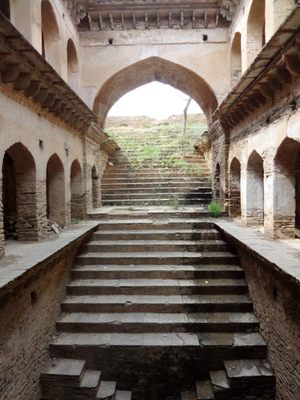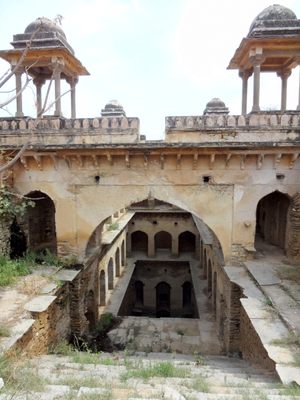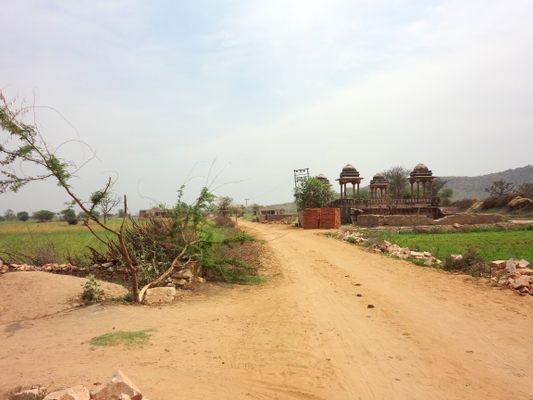About
Four elegant domes (chhatris) poke up above fields outside the small village of Mukundpura, Haryana, signaling the presence of a local stepwell. And what a pretty one it is: small, almost intimately scaled and beautifully proportioned, its interior ringed by arched corridors. Even the weeds, roots, and a couple of trees that are slowly overtaking the structure add a sad beauty to the crumbling edifice.
Known as baori, baoli, bawadi, and vav, depending on the region, stepwells were subterranean water-harvesting structures unique to the subcontinent, where thousands were built starting around 600 CE. Marvels of architecture, engineering, and art, their primary purpose was to provide water all year long, which meant accessing groundwater no matter how shallow or deep it was.
Thanks to India’s capricious climate, water levels fluctuated from a relative trickle in dry seasons to a strong, steady flow during monsoons. Steps were required to reach water at its low ebb, but as the level rose, those steps—which could number well over a hundred—would submerge, and the cycle began again. Some stepwells are incredibly deep (Neemrana Baori), since the groundwater was several stories underground. Others, like Mukundpura, required only a few levels before water could be struck. This stepwell yielded enough water to support the town and irrigate the lush fields.
It’s believed that the town and stepwell are named for Rai Bal Mukund Das, a rich landowner who had served under emperor Shah Jahan, of Taj Mahal fame. Das must have been a real fan of architecture, having also built a sumptuous palace for himself nearby in the Mughal city of Narnaul. He followed that with a large (if simpler) inn for travelers.
The stepwell he donated to the village is diminutive, befitting the local population. It’s devoid of ornamentation, although there may have been frescoed plaster originally. But the two stories of arched galleries with the domes above give this jewel a regal feel. It’s unfortunate that, like most of India’s unloved baolis, Mukundura is dying a slow death, despite its earlier relevance.
Victoria Lautman is an arts and culture journalist with a focus on India. Her book, The Vanishing Stepwells of India, was published in 2017 by Merrell (London). Follow her @victorialautman.
Published
April 23, 2018



















